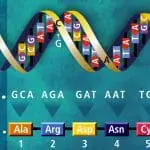During certain times of the year, stargazers are treated to the sight of the second planet in our solar system, Venus, which appears as a bright white orb. This planet, which is similar in size and structure to Earth, was named for the Roman goddess of love. Venus has a thick atmosphere that traps in the sun’s heat, and its surface temperature is so hot that it could melt lead (at 880 degrees Fahrenheit). Trust me, Venus is not the next tropical getaway destination!
Under the swirling mass of clouds that obscure the surface of this planet, researchers have glimpsed tens of thousands of volcanoes and mountains. The tallest of these volcanoes rivals Mount Everest in height. Venus is also pock-marked with giant craters from meteoroids that make it through its thick atmosphere without burning up. The atmosphere is so heavy that if you were to stand on the surface of this planet you would feel as if you were a mile underwater!
The top level of clouds are driven by hurricane-force winds whipping past at 224 miles per hour. This means they rotate the planet every four “Earth days.” These clouds are often lit up by atmospheric lightning. But, as you descend to the hot surface of the planet, the clouds slow down to just a few miles per hour.
Occasionally, the planet passes in front of the face of the Sun. That’s called a “Transit” and I’ve caught this rare event on camera. How rare is it? It won’t happen again in our lifetime. One other really neat experiment that you can do, is to look at Venus through a telescope. Over the course of several months, you can actually see it go through phases, like our moon, as the light from the sun illuminates more of the visible area.
Venus rotates backward compared to Earth and most of the other planets. This is called retrograde motion. This means the sun doesn’t rise and set each day like it appears to do on Earth. Instead, it takes 117 “Earth days” to complete one day-night cycle. Venus is only tilted three degrees on its axis so it doesn’t experience seasons like we do.
This retrograde motion is an interesting problem for evolutionary cosmology. You see, their models of planetary formation predict that all planets should spin in the same direction. To explain why Venus (and Uranus) rotate backward, some cosmologists have developed a rescuing device by speculating that perhaps a close encounter with another planet or a star reversed the planets’ orbit – but to date, there is no evidence for such an encounter.
The beauty of Venus, like everything we see in the heavens, declares the glory of the Creator who placed these beautiful objects in the sky for our pleasure, His glory, and to serve as markers of time.
I’m David Rives. Truly…the heavens declare the glory of God.
LIKE David’s FB page here: http://www.facebook.com/DavidRivesMinistries
FOLLOW us on Twitter: http://twitter.com/TheDavidRives
VISIT our official website for tons of free information: http://www.davidrivesministries.org
David Rives MUSIC: http://www.davidrivesmusic.com
For the TBN show “Creation in the 21st Century”: http://www.creationinthe21stcentury.com





